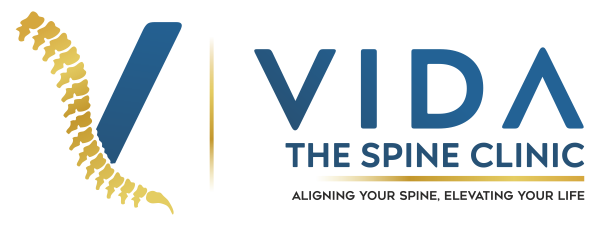
Best Psychologist in Pune | for Anxiety, Depression & Mental Wellness

Back pain is one of the most common complaints people have today, whether you’re sitting at a desk all day, lifting heavy objects, or just feeling the wear and tear of daily life. While occasional back pain is something many experience, chronic back pain—the kind that sticks around for weeks, months, or even years—is a different story. It doesn’t just affect your body, it affects your mood, sleep, productivity, and overall quality of life.
If you’ve been struggling with persistent back pain, you’re not alone—and there are natural ways to manage it without depending solely on medications or surgery.
In this article, we’ll break down what causes chronic back pain, what signs you should watch for, and how to treat it naturally and effectively.
What Is Chronic Back Pain?
Chronic back pain is pain that lasts for 12 weeks or longer, even after an initial injury or underlying cause has been treated. It can be dull and constant or sharp and intermittent. It may occur in your lower back (the most common), mid-back, or upper back.
While acute pain usually resolves on its own with rest or basic care, chronic back pain often requires a deeper look and more consistent management—especially if it’s interfering with your daily life.
Common Causes of Chronic Back Pain
There isn’t one single reason people experience chronic back pain. Here are some of the most common causes:
1. Muscle or Ligament Strain
Frequent heavy lifting or sudden awkward movements can strain back muscles and spinal ligaments, especially when core strength is weak.
2. Degenerative Disc Disease
As we age, the cushioning discs between vertebrae can wear down, leading to pain and stiffness.
3. Herniated or Bulging Discs
Discs that slip out of place or press on nerves can trigger ongoing discomfort, numbness, or shooting pain.
4. Spondylosis and Spondylitis
Conditions like lumbar spondylosis (degenerative changes in the lower spine) and ankylosing spondylitis (a type of inflammatory arthritis affecting the spine and sacroiliac joints) can lead to stiffness, chronic pain, and reduced mobility.
In some cases, these conditions may also cause spinal stenosis, where the spinal canal narrows and compresses the spinal cord or nerves.
5. Poor Posture
Long-term sitting with improper posture can stress the spine and back muscles, leading to chronic pain.
6. Injuries or Accidents
Past injuries from falls, sports, or car accidents may continue to cause pain long after healing.
7. Stress
Believe it or not, emotional stress can cause muscle tension, especially in the back and neck.
Signs and Symptoms You Shouldn’t Ignore
Not all back pain needs medical attention, but certain symptoms should never be brushed off. These include:
- Pain that doesn’t improve with rest or worsens over time
- Numbness or tingling in legs or feet
- Difficulty standing up straight or walking
- Sudden weight loss with no explanation
- Loss of bladder or bowel control
If you experience any of these, it’s important to talk to a healthcare provider.
Why Choose Natural Treatment First?
Natural treatments focus on addressing the root cause and supporting the body’s healing without relying heavily on medication or surgery. Many patients prefer starting with these methods because:
- There are fewer side effects
- It encourages long-term lifestyle improvements
- It can often be done at home or with minimal tools
- It focuses on the whole body, not just symptoms
These methods don’t promise overnight relief, but they often lead to long-lasting benefits when done consistently.
Natural Treatment Options for Chronic Back Pain
Here are some effective, natural ways to manage chronic back pain without drugs or invasive procedures:
1. Physical Therapy
Tailored exercises and stretches can strengthen your core, improve flexibility, and reduce pressure on your spine. A physical therapist can design a program that suits your body and pain level.
2. Chiropractic Care
Manual adjustments from a trained chiropractor can improve spinal alignment and reduce nerve compression. Many patients find relief from regular sessions.
3. Acupuncture
An ancient Chinese technique, acupuncture uses thin needles to stimulate points on the body, helping reduce inflammation and encourage healing.
4. Massage Therapy
A good massage does more than just relax you. It can increase blood flow, loosen tight muscles, and ease stiffness in the back.
5. Yoga & Stretching
Gentle yoga routines focus on body alignment, posture, and breathing. They not only relieve back tension but also help you become more aware of how you move and sit throughout the day.
6. Herbal Supplements
Some herbs like turmeric, ginger, and devil’s claw have natural anti-inflammatory properties. However, always check with your doctor before using them—especially if you’re on medication.
Lifestyle & Home Remedies
Small changes at home can make a big difference. Try these:
✅ Improve Your Posture
Sit with your back straight, shoulders relaxed, and feet flat on the floor. Use lumbar support when needed.
✅ Sleep Smart
Use a mattress that supports your spine. Sleep on your side with a pillow between your knees or on your back with a pillow under your knees.
✅ Stay Active
Even light activity like walking or swimming helps maintain spinal health. Avoid long periods of sitting or lying down.
✅ Apply Hot or Cold Therapy
Heat relaxes muscles, while ice reduces inflammation. Use what feels best for your pain type.
✅ Watch Your Weight
Extra weight, especially around the abdomen, puts strain on your back. A balanced diet and exercise can help reduce this pressure.
✅ Stay Hydrated
Your spinal discs need water to stay flexible. Drinking enough water can help maintain their function.
When to See a Specialist?
While mild back pain often improves with rest, exercise, or natural remedies, you should consult a specialist immediately if you experience any of the following:
- Back pain lasting more than 3 months despite home treatment
- Pain that radiates to your legs (sciatica-like symptoms)
- Pain that worsens with walking or activity
- Weakness, numbness, or tingling in the legs
- Any injury or trauma to the back or spine
- Loss of bladder or bowel control (a potential emergency)
Depending on your symptoms, the right specialist may include:
- Orthopedic Specialist – for spine and joint-related issues
- Physiatrist (Rehabilitation Doctor) – for non-surgical management and physical recovery
- Neurologist – for nerve-related symptoms and diagnostics
- Spine Surgeon – in severe cases requiring surgical evaluation
They may recommend imaging tests like X-rays, MRI, or CT scans, and guide you toward targeted treatments such as nerve blocks, physiotherapy, or minimally invasive procedures.
Conclusion
Chronic back pain can feel like a constant battle, but you don’t have to face it alone—or rely only on medications. Natural treatments like physical therapy, yoga, acupuncture, and simple lifestyle changes can offer real relief and put you on a path to long-term healing.
The key is being consistent and listening to your body. With time and care, you can improve your back health and enjoy your daily life with less pain.
FAQs
1. Is walking good for chronic back pain?
Yes, walking is a low-impact exercise that keeps the spine healthy, improves circulation, and supports overall movement.
2. How long does it take for natural remedies to work?
This varies from person to person. Some may feel relief in a few weeks, while others might need months of consistent care.
3. Can stress really cause back pain?
Yes. Stress creates tension in the muscles, especially in the back and neck, which can lead to or worsen pain.
4. Is it safe to use herbal supplements for back pain?
Some herbal remedies can help, but always consult your doctor before starting, especially if you take medications or have health conditions.
5. Should I stop exercising if I have chronic back pain?
Not necessarily. Light activity and specific exercises can actually help. It’s best to work with a physical therapist to find what works for your condition.


